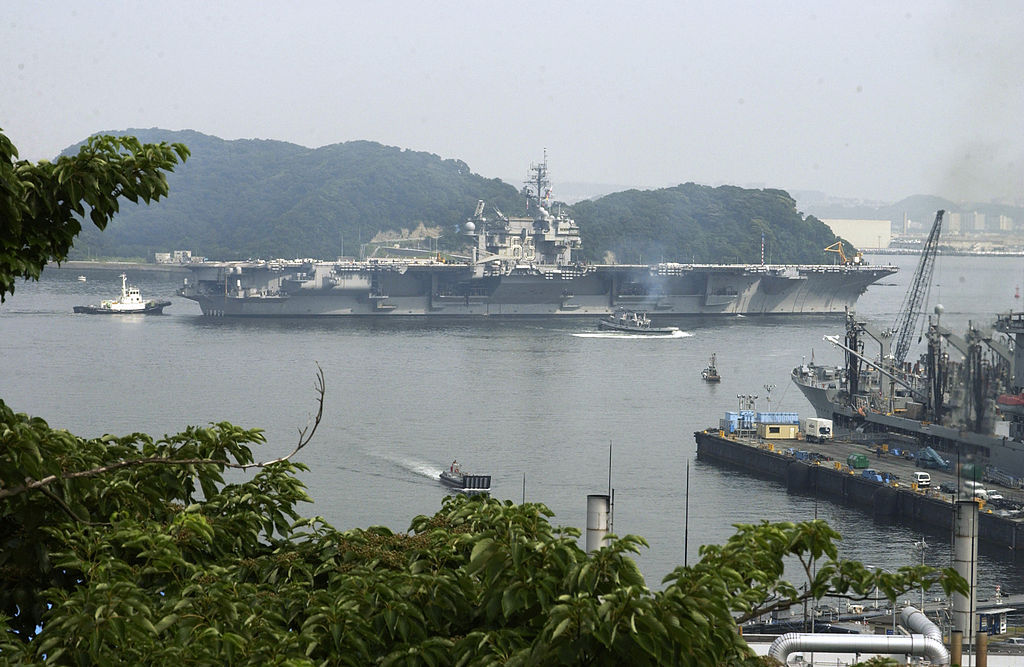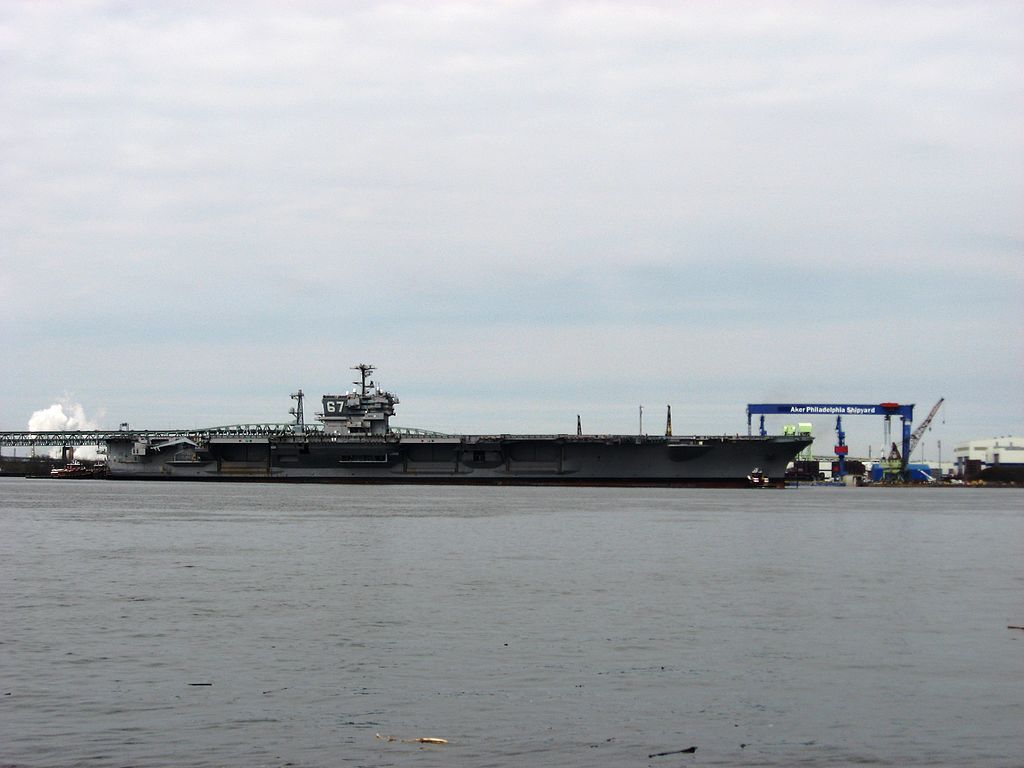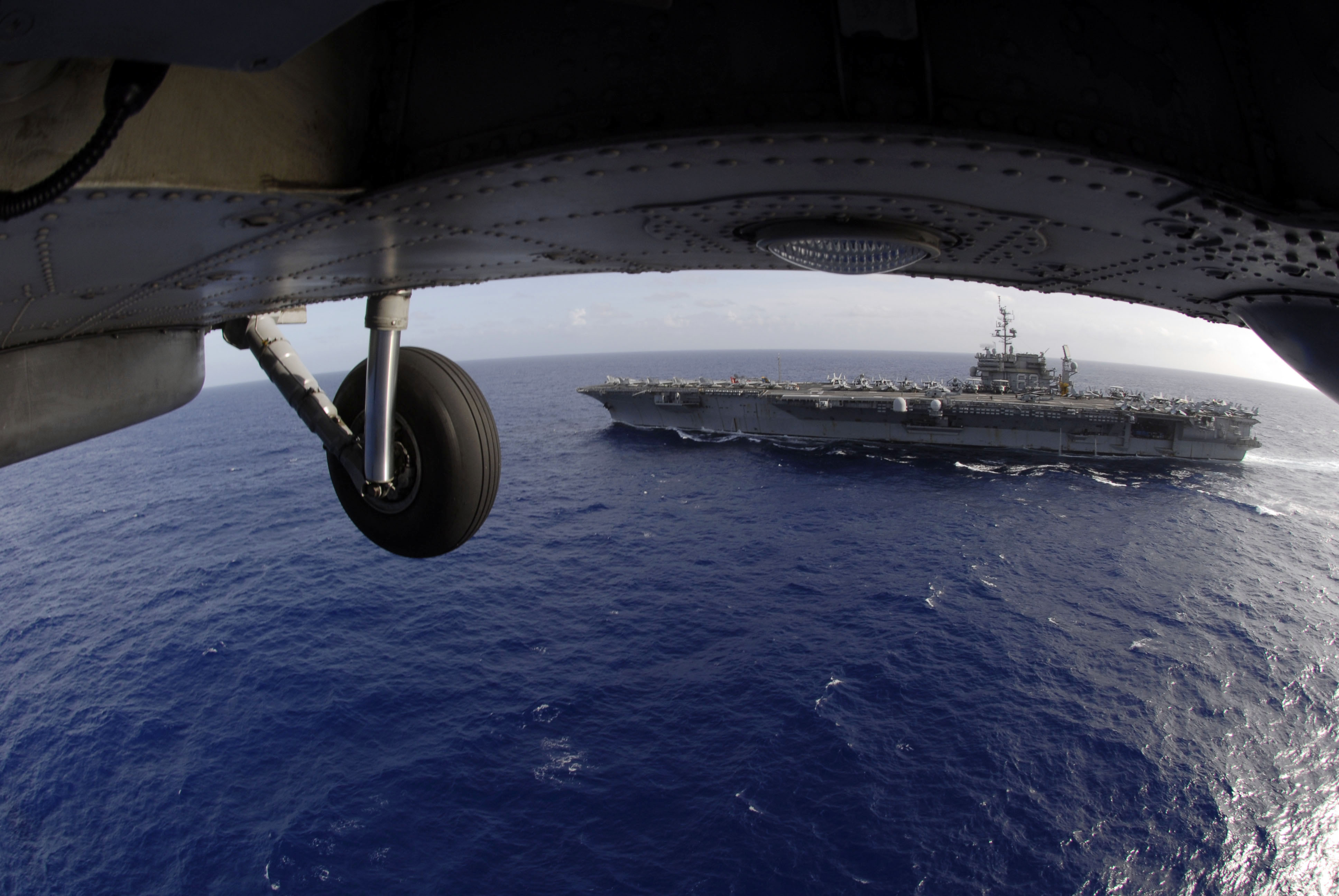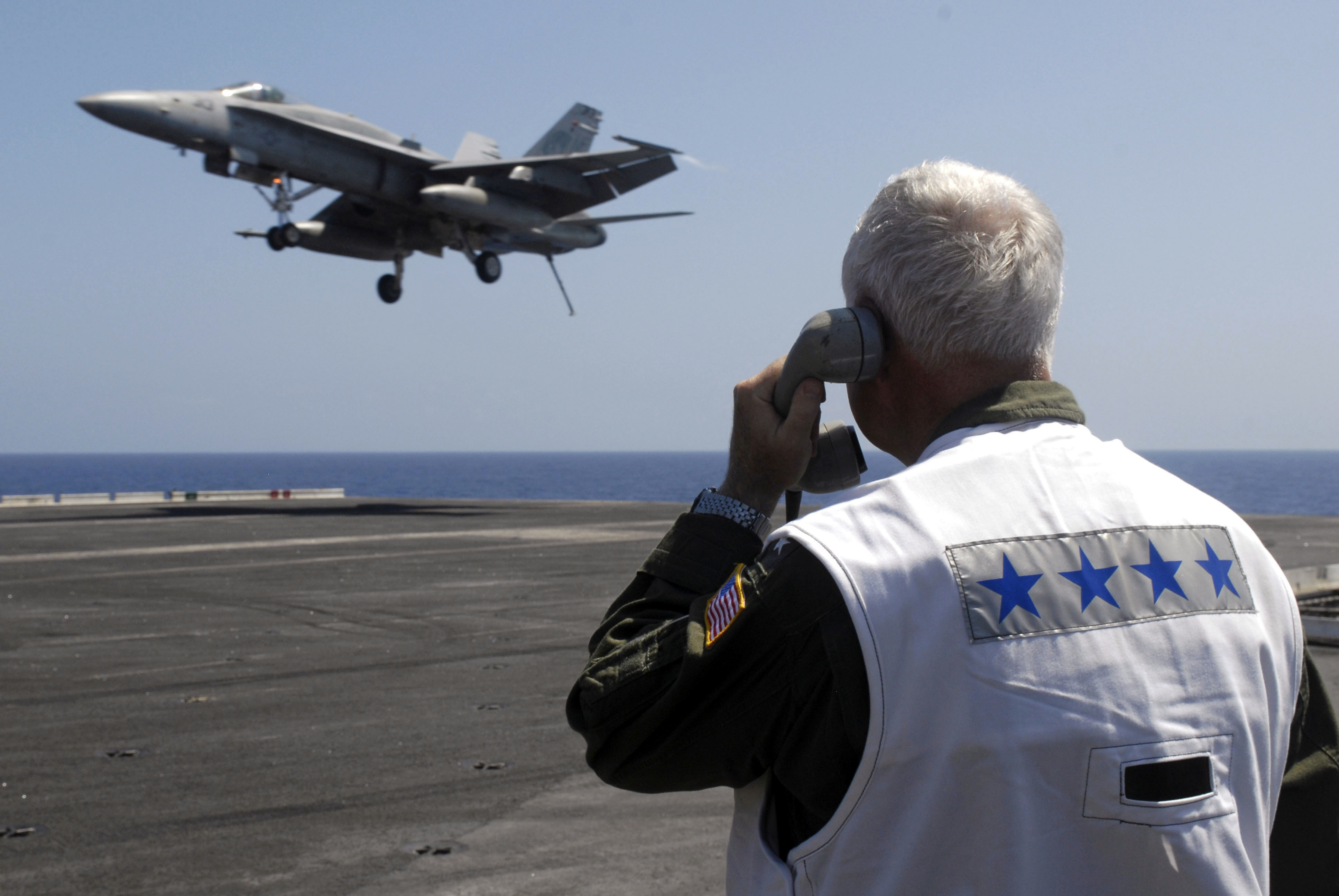
When James Melka first approached USS Kitty Hawk (CV-63), he had no idea the size of the aircraft carrier.
As the 17-year-old walked toward the pier in 1965, he could see the big gray ship, growing larger as he approached. It was “amazing” to walk onto the ship, then just four years into its service life, via its gangplank, Melka recalled.
At 1,047 feet, the former USS Kitty Hawk (CV-63) is almost the length of three football fields. More than 50 years after he left the ship, the size of it still sticks with Melka.
That’s also how it was for his father, who visited Kitty Hawk while Melka served in the Navy. For 70 years after, until his death, Melka’s father, who had served in the Navy during World War II, talked about the ship’s size.
The ship’s size might be what Melka remembers first about the Kitty Hawk, but what draws him to it all these years later is the sense of belonging. The ship was his home.
“And when you spend that much time and work that hard seven days a week near sea you learn to love the place,” Melka told USNI News recently. “And after even after leaving there, you know I still have a connection with that ship. I always will.”
Melka spent three and a half years – the majority of his Navy career – aboard Kitty Hawk as a boilerman in the boiler room.
He spent many more trying to turn the decommissioned ship into a museum. But the plans of USS Kitty Hawk Veterans Association, of which Melka is president, received the final blow last month when the Navy sold the ship to International Shipbreaking Limited in Brownsville, Texas for a penny on Sept. 29.
International Shipbreaking Limited will tow, remediate, dismantle and recycle Kitty Hawk, as well as the former USS John F. Kennedy (CV-67), Naval Sea Systems Command told USNI News. The future contract for John F. Kennedy is also for one cent.
It will be hard for Melka and others in the Kitty Hawk Veterans Association to see the ship, where they lived for years during service in the U.S. Navy, be turned into scrap metal.
“It’s heartbreaking,” Melka said.
The chances of the decommissioned aircraft carrier becoming a museum were already dashed in 2018, when Melka received a letter from the Navy saying that the ship was never destined to be a museum. It was always headed for the scrapyard.
That was a blow, Melka said. He thought the veterans association would at least have a chance to save their ship.
“Nobody’s gonna know … what a Kitty Hawk-class aircraft carrier was,” Melka said. “They’ll just see pictures. They won’t be able to see the actual ship and be able to walk on it.”
The former Kitty Hawk commissioned on April 29, 1961 and served just over 48 years before its decommissioning on May 12, 2009, when it headed to the Navy’s Inactive Ships Maintenance Facility in Bremerton, Wash.
Kitty Hawk supported Operation Iraqi Freedom from March 19 until April 18, 2003, as well as an 83-day deployment in support of Operation Enduring Freedom, according to the Navy’s ship history.
In the ship’s early days, it took part in the Vietnam War.
That was another reason Melka thought the ship should become a museum. If a Vietnam-era ship became a museum, it would give veterans a chance to talk about their experiences. His father hardly talked about World War II, but when they visited a World War II battleship, he told his grandchildren about the history of the war.
The former John F. Kennedy commissioned on Sept. 7, 1968 and was taken out of active duty in 2007 and then placed on donation hold – which allows nonprofits to try to turn a ship into a museum – in 2009. The ship was the last conventionally powered aircraft carrier the Navy purchased.
John F. Kennedy was also part of operations Enduring Freedom and Iraqi Freedom toward the end of its time in service, according to the naval history of the ship.
Efforts to turn John F. Kennedy into a museum failed and the ship was re-designated to be dismantled, the Navy told USNI News in an Oct. 5 statement.

Last Chance for a Carrier
John F. Kennedy and Kitty Hawk were likely the last supercarriers that could be turned into museums, said Ryan Szimanski, executive director of the Historic Naval Ships Association.
“I think it would be amazing if a supercarrier were saved as a museum,” Szimanski said. “But now that the last two conventional ones are being sold for scrap, that probably will never happen.”
The rest of the Navy’s aircraft carriers – both those currently in the fleet and recently decommissioned – are nuclear-powered, he noted, which makes it difficult for conversion into a museum. USS Nautilus (SSN-571) was turned into a museum, but in doing so, the submarine had to get cut up pretty badly in order to remove the nuclear reactor, Szimanski said.
There are five aircraft carrier museums in the United States. The Intrepid (CV-11) Sea, Air and Space Museum is located in New York, New York. The former USS Yorktown (CV-10) is in Mt. Pleasant, S.C., while the former USS Lexington (CV-16) is a museum in Corpus Cristi, Texas. The former USS Midway (CV-41) Museum is in San Diego, Calif., and the former USS Hornet (CV-12) Sea, Air and Space Museum is in Alameda, Calif.
In order for a Navy ship to become a museum, there are steps a group must follow, he said.
First, it must form a nonprofit organization. Second, the group must reach out to Naval Sea Systems Command, which oversees ships in reserve. The group needs to request a ship be put on donation hold, which allows it to become part of the “mothball fleet,” preventing it from getting dismantled.
NAVSEA will give the nonprofit multiple tasks, which include raising an amount of money to maintain the ship and museum and providing thorough documents describing how the museum will run and what artifacts have been collected.
Those maintenance costs depend on the ship, but for battleship USS New Jersey (BB-62), which Szimanski runs in Camden, N.J., it costs $5 million a year to operate. The museum also needed to have a $1 million insurance plan.
It would be reasonable that the decommissioned Kitty Hawk or John F. Kennedy would also need a $1 million insurance plan and at least $5 million per year to operate, or potentially more since the ships are bigger, he said.
If NAVSEA accepts the nonprofit’s request to save a ship, the two organizations would then enter into a contract that gives ownership of the ship to the nonprofit, with restrictions and rules set by the Navy, Szimanski said.
Raising the funds needed can be a challenge, he said, which is what happened in the case of Kitty Hawk and John. F. Kennedy. Those are large ships, which meant they required more funds to maintain.
Success varies based on time and ship size, Szimanski noted. Nonprofits have had the most success with converting battleships into museums. Aircraft carriers have been saved as museums about half the time.
The highest amount of ships were turned into museums following World War II, with the first one opening in 1948.
“We had a tremendous number of ships. And a lot of those ships were up for disposal during the ‘golden age’ of turning ships into museums,” he said.
Even up until the 1990s, organizations had success turning ships into museums, partially because cities wanted ship museums as tourist attractions, according to Szimanski.
Although ships are still getting converted into museums, it’s now harder with less cities available that do not already have a ship museum. There needs to be a place to house the ship where it will not compete with another ship museum, Szimanski said.
The lack of places for a supercarrier could have been a challenge when it came to Kitty Hawk or John F. Kennedy, he said.

Experiencing Life At Sea
Turning ships into museums allows people to experience life at sea, Szimanski said.
“But there are a ton of Civil War battlefields out there that you can go and visit. But how do you go and visit the Battle of the Philippine Sea battleground? You can’t really go to the middle of the ocean and see where that was fought,” Szimanski said. “But you can go on one of the aircraft carriers or battleships that fought there.”
As one of the last conventional supercarriers, Kitty Hawk is history, said Rich Orth, one of the ship’s plankowners.
Orth was a farmboy from Iowa who had never seen an ocean when he joined the Navy. His first permanent ship assignment was the newly commissioned Kitty Hawk.
Orth joined the Kitty Hawk Veterans Association in 2008, years after the group started planning the museum, so he could be a part of the ship’s last cruise.
Had the ship become a museum, Orth would have been one of the first volunteers. He knows the association tried everything possible to save the ship, but he understood the challenge of raising enough funds to open and operate a museum.
Orth has made peace with the ship being sold for scraps, he said. The ship might not be saved, but it will not be forgotten. Instead, it’ll live on in the memories of those who served on it.
“Maybe with it being scrapped, it’ll come back, or part of that material anyway, will come back around and help build another ship or something,” he said.
He started aboard Kitty Hawk in April 1961 and left the ship on Oct. 14, 1963. Orth was 17 when he enlisted and, like many men who served on the ship, grew up and learned discipline during his years aboard. There’s a fellowship that is formed by working on a ship, Orth said.
It becomes part of a person’s soul, he said.
Orth was on Kitty Hawk’s first cruise, and he was on its last, when the ship sailed from San Diego to Bremerton in 2008 for its decommissioning.

Both Kitty Hawk and John F. Kennedy will be towed to International Shipbreaking Limited’s facility in Texas, although a tow and dismantlement timeline have not yet been determined, according to the Navy statement.
When that final tow does happen, Melka plans to watch both when it leaves the pier at the Puget Sound Naval Shipyard and Intermediate Maintenance Facility and when it arrives at its final home in Texas.
“Watching the Kitty Hawk, there will be a lot of tears,” he said.
Although the ship was not saved as a museum, parts of it will live on, Szimanski said. Pieces of ships like John F. Kennedy and Kitty Hawk have been used to repair ships that have already been turned into museums.
The ship will also live on in the memories of its crew. Orth will personally work to make sure the ship is not forgotten. Many of his clothes have Kitty Hawk insignia on them. He has a mural of the ship on his van and a Kitty Hawk license plate.
“As long as I’m alive I’ll remember Kitty Hawk and all my stuff that I leave behind will be remembering Kitty Hawk also,” Orth said. “So I mean, it’s just part of me.”





